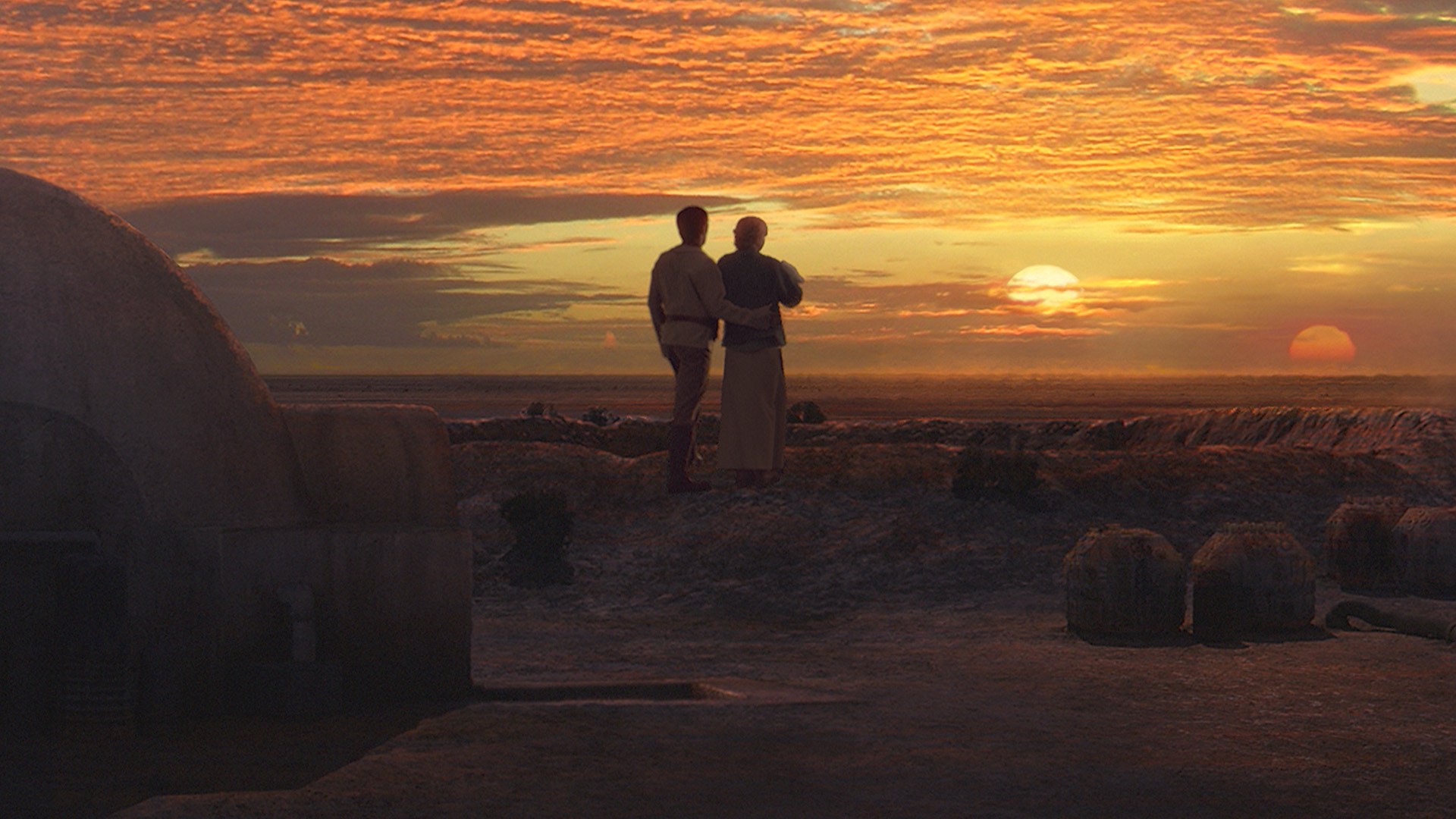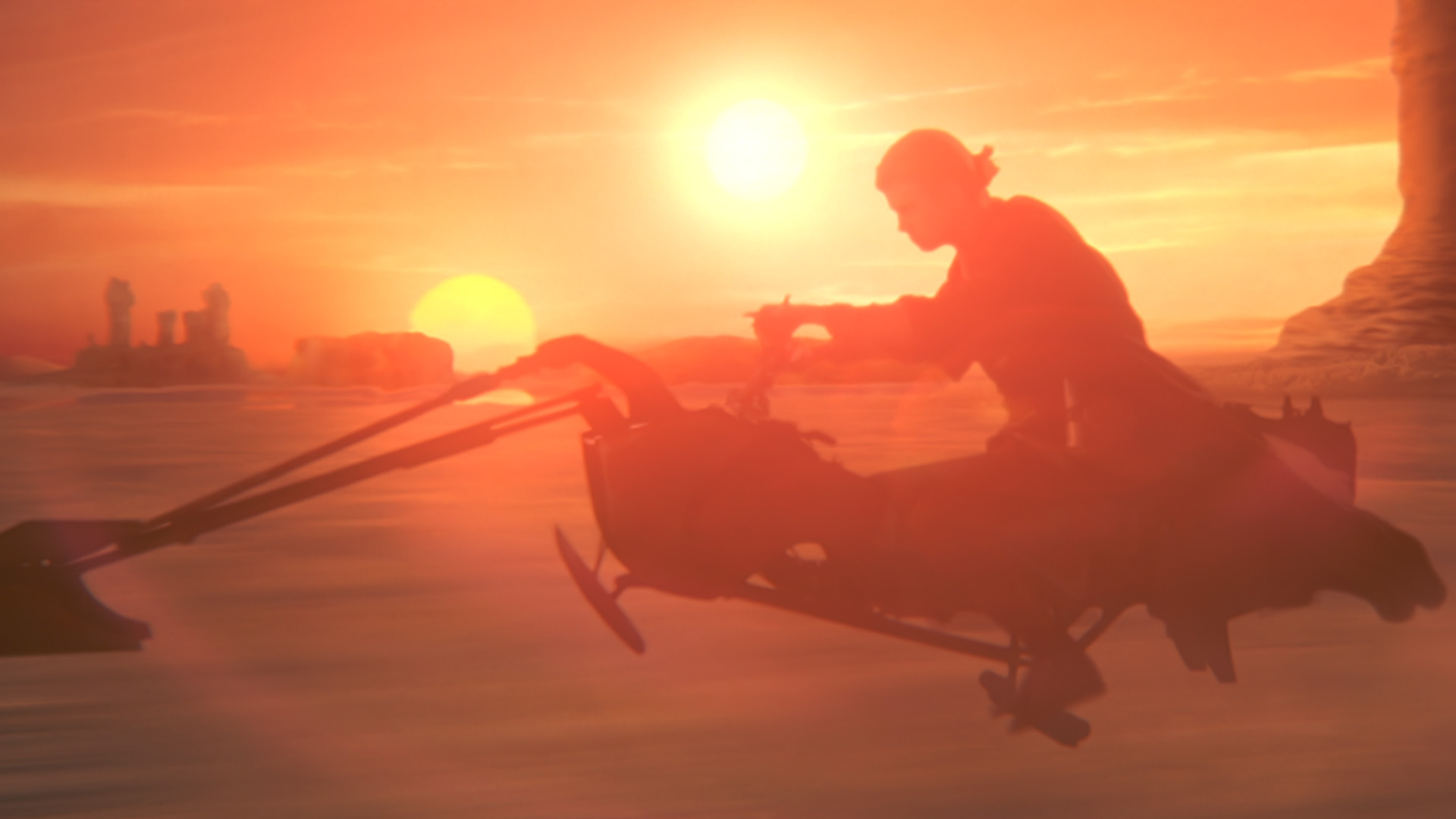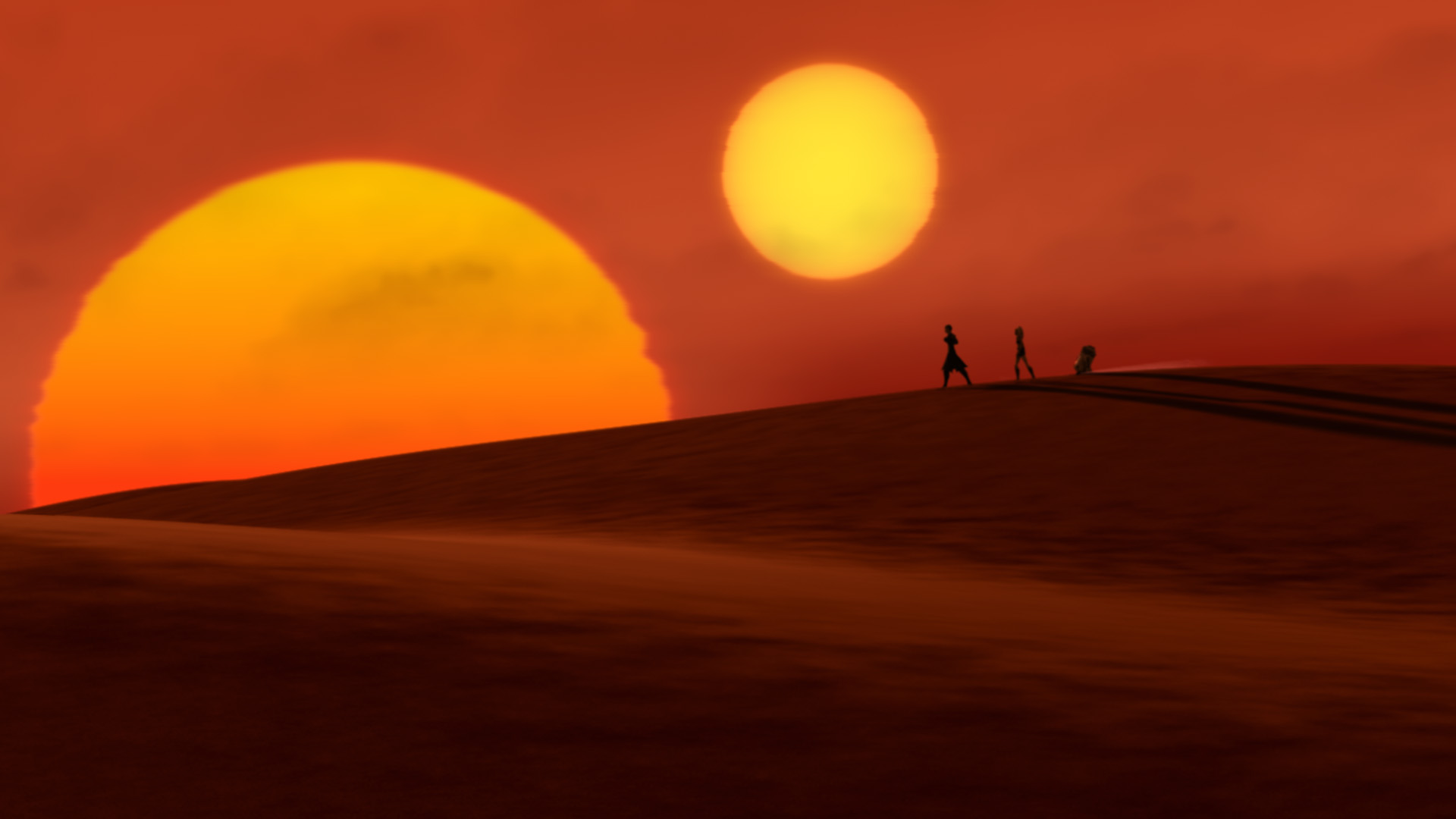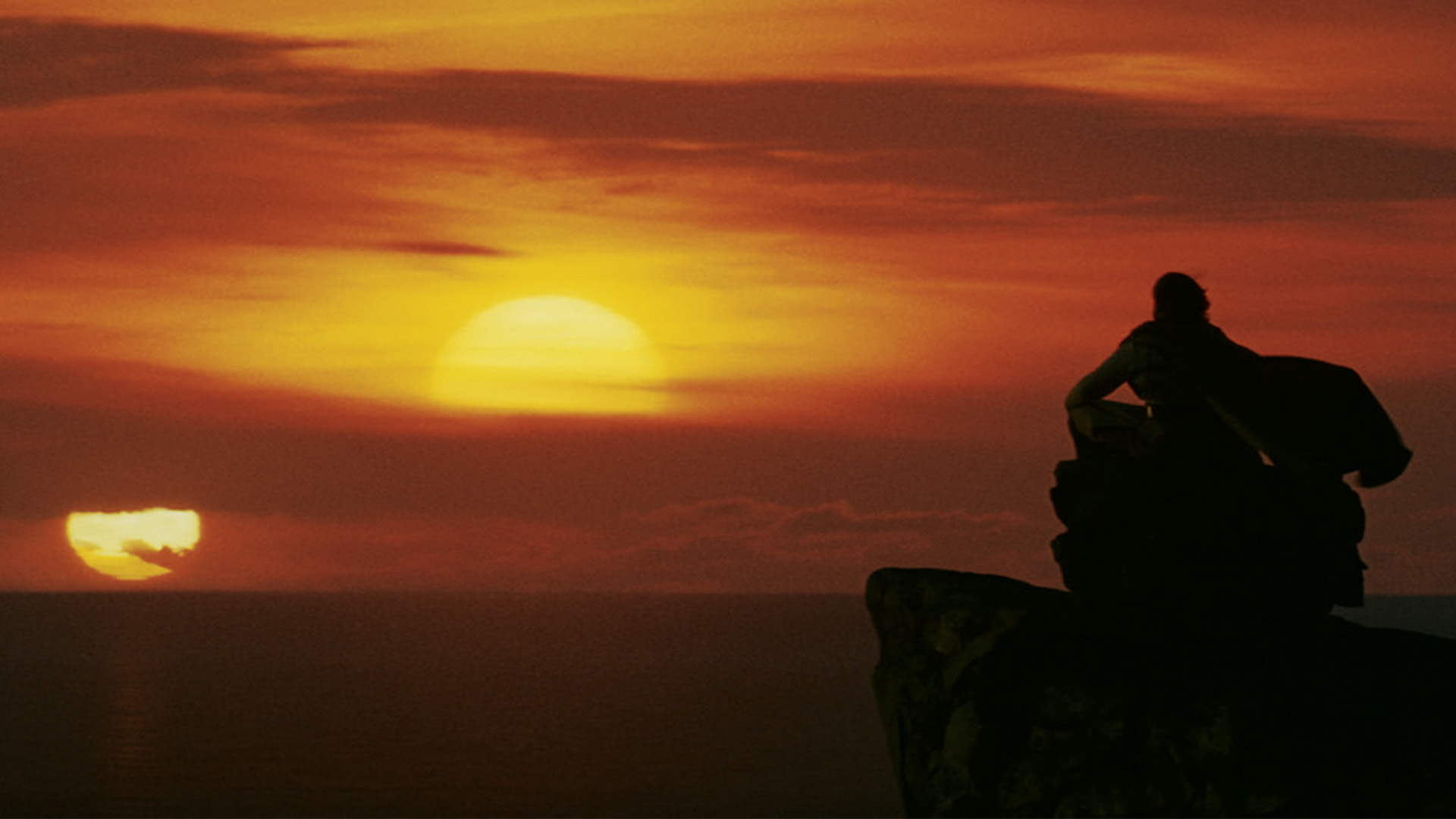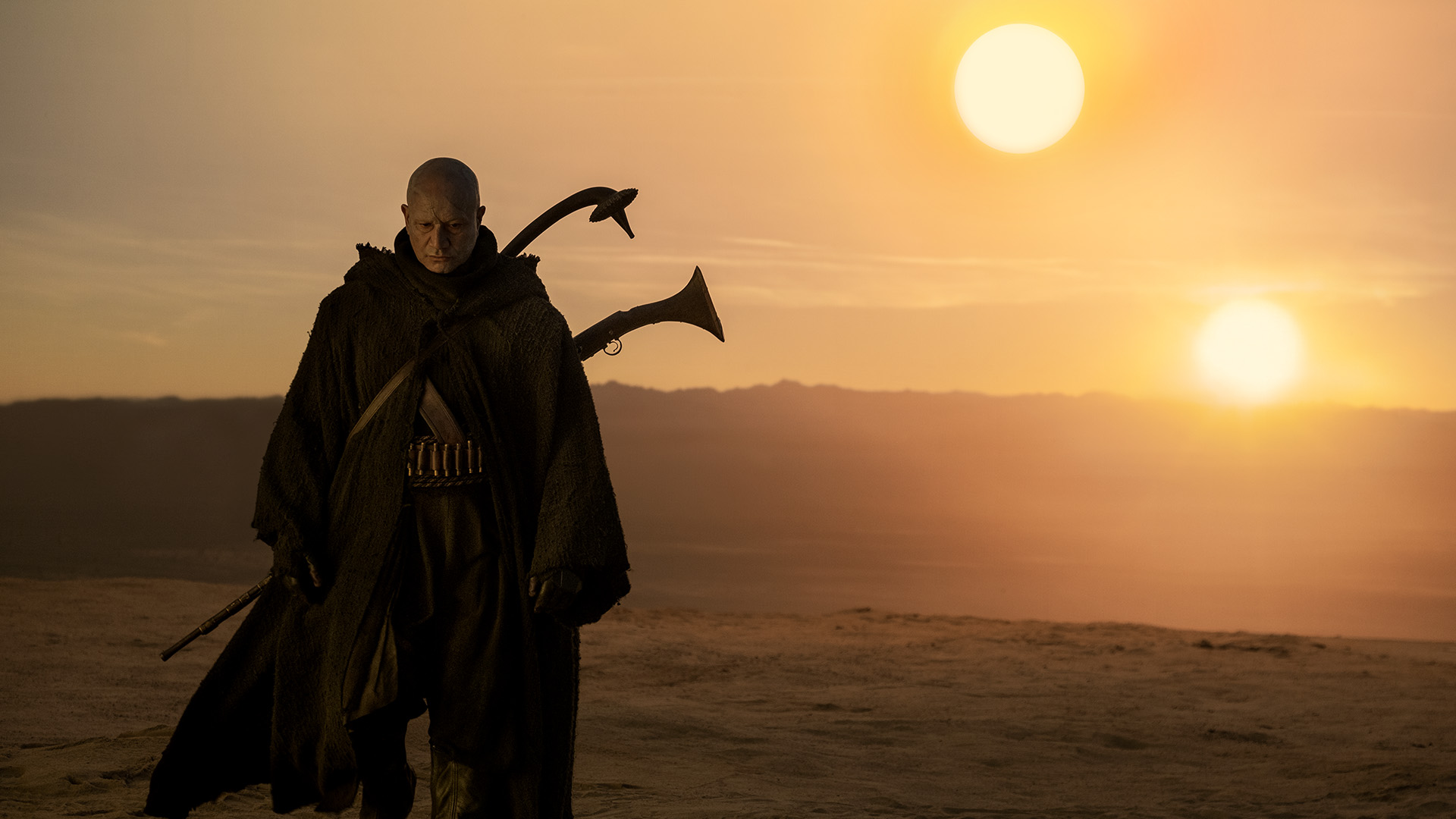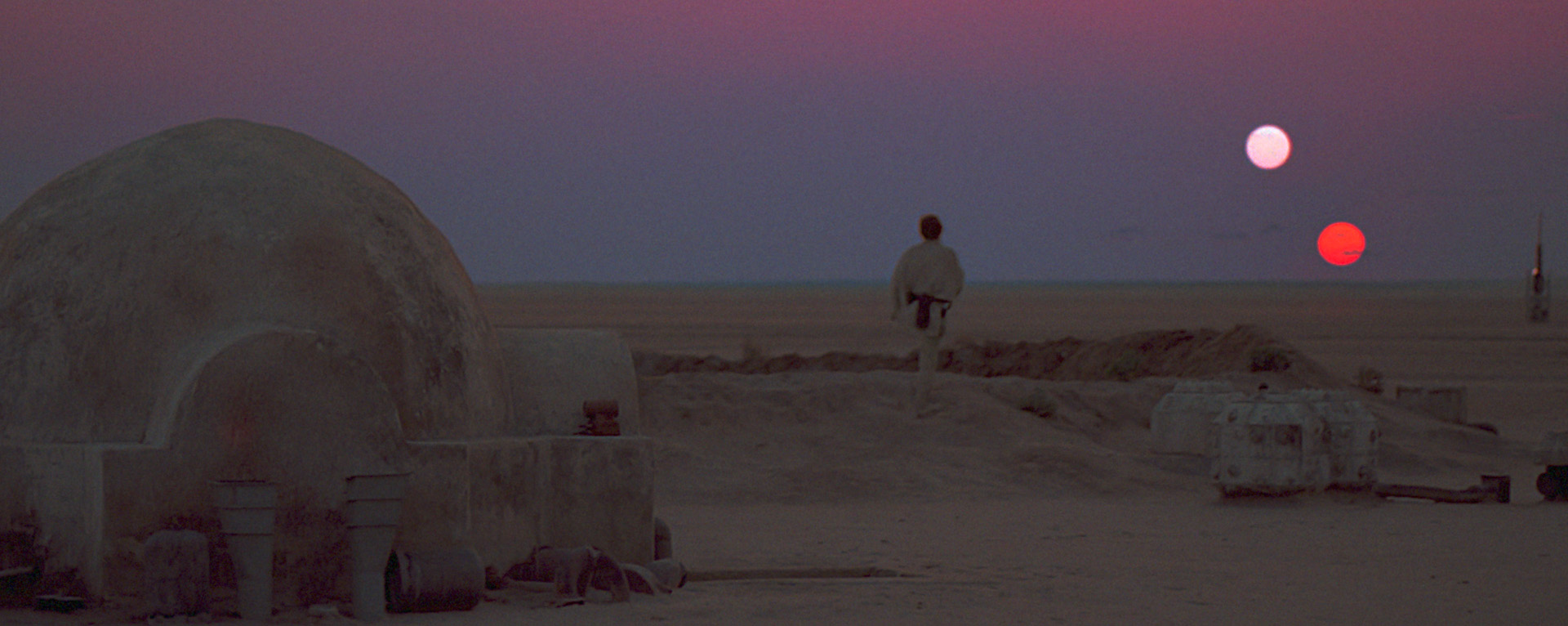Defining Moments: Twin Suns
A Scene with No Dialogue Can Still Have a Lot to Say
“Defining Moments” is a continuing series exploring key scenes or sequences from Lucasfilm’s many productions. It examines storytelling craft, behind-the-scenes insights, and cultural legacies from each selection. Revisit an old favorite or discover something brand new…
Production: Star Wars: A New Hope (1977)
Audiences who had seen American Graffiti in 1973 might have noted a familiar theme when they went to see Star Wars: A New Hope four years later. College-bound friends Curt and Steve, two of Graffiti’s main characters, wrestled with dreams and distress about a future outside of their small town. Similarly, in A New Hope, an adolescent on a far-off planet named Luke Skywalker laments being stuck at home with its obligations.
Luke’s yearning and frustration takes him outside at sundown. The harsh desert world of Tatooine has not one but two suns. Atop a small rise in the barren landscape, Luke gazes into the fading light without a word. A gentle piece of orchestral score illustrates his emotions. Writer and director George Lucas would note that he asked composer John Williams for something “romantic” and “wistful.”
Filming of A New Hope had commenced in the deserts of Tunisia on March 22, 1976. The plan was to capture the sunset at day’s end, but the weather wasn’t agreeable. Delays persisted for a week. At last on March 29, the scene was filmed. Months later the artists and technicians at Industrial Light & Magic created the final matte element.
The image of twin suns originates in George Lucas’ rough-draft summary of “The Star Wars” from 1974, wherein early characters King Kayos and Queen Breha watched the sunset from their “Palace of Lite.” The idea survived revisions into screenplay form. In 1975, artist Ralph McQuarrie painted a scene of the desert planet with the suns visible. Lucas had developed the characters Luke and Leia as twins, and the suns reflected this “mythological significance” according to “The Making of Star Wars” by former Lucasfilm executive editor J.W. Rinzler.
The visual motif has followed the Star Wars saga ever since. Lucas revived it for Attack of the Clones (2002) when Anakin Skywalker searches for his mother in the wastes of Tatooine. The final shot of Revenge of the Sith (2005) placed Owen and Beru Lars with baby Luke Skywalker against the sunset. The animated series Star Wars: The Clone Wars and Star Wars Rebels have featured it. Luke Skywalker’s self-sacrifice in The Last Jedi (2017) ends with the familiar vision. And most recently in The Mandalorian, viewers glimpse the suns behind a recognizable bounty hunter.
It is one of Lucasfilm’s most ubiquitous images, crossing generations and between filmmakers, reminding us that while there is always uncertainty, there is also hope.
